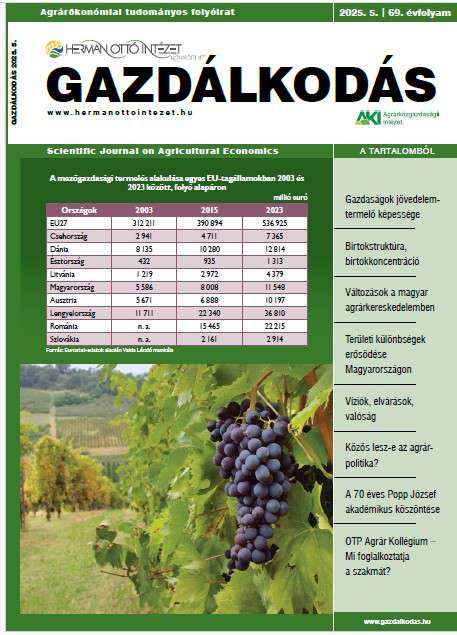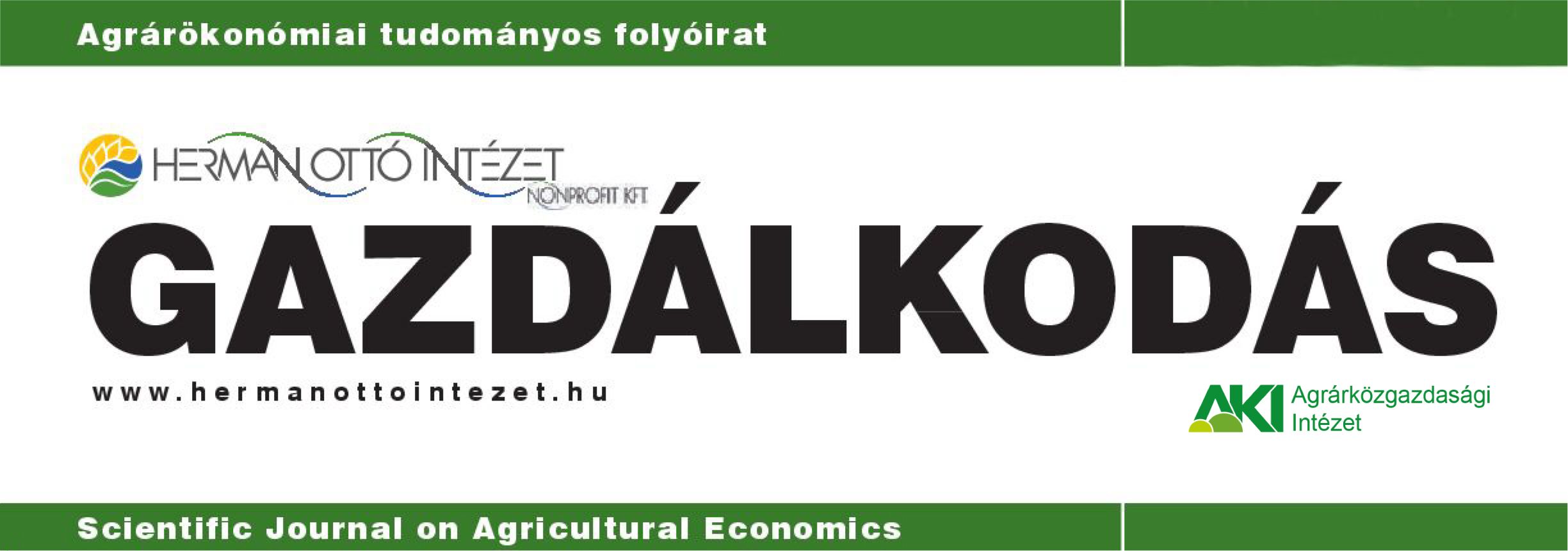Archive » 2025 » 2025. 05. » TÓTH, PÉTER: LAND USE STRUCTURE, LAND CONCENTRATION, FARM STRUCTURE IN HUNGARY BETWEEN 2010 AND 2023

LAND USE STRUCTURE, LAND CONCENTRATION, FARM STRUCTURE IN HUNGARY BETWEEN 2010 AND 2023
TÓTH, PÉTER
Keywords: Keywords: farm structure statistics, standard output, land use, livestock, farm managers JEL-codes: Q10, Q12, Q15
Teljes cikk
The results of the five farm structure surveys carried out between 2010 and 2023 provide detailed information and sufficient comparative data to monitor changes in the structure of Hungarian agriculture. Over the 13-year period examined, the previously observed decline in the number of farms in Hungary continued. The ratio between crop specialist farms and livestock specialist farms has changed completely: while in 2010 the ratio was 45-40% in favour of livestock specialist farms, in 2023 it was 73% for crop specialist farms and only 14% for livestock specialist farms. The share of mixed farms has been steadily declining, with just under 8% of farms belonging to this category in 2023. As the number of farms decreased, the average and median size of farms increased steadily, with the average utilised agricultural area in 2023 being 4.5 times larger than in 2010. There has also been a significant concentration in livestock farming, with a reduction in the number of farms for all species, with only 76 000 farms in 2023 compared with 250 000 in 2010. The number of different animal species varied and developed differently. Concentration is shown by the fact that, over almost a decade and a half, the number of farms with the lowest standard output (SO) of below 4 thousand euros has decreased the most, while the share of farms with a SO of more than 15 thousand euros has more than doubled. The ageing of managers has continued, and although the proportion of female managers has increased, 71% were male in 2023. Between 2010 and 2023, there have been positive changes in the highest agricultural qualifications of farm managers, with a decreasing share of those with only practical agricultural experience. DOI: https://doi.org/10.53079/GAZDALKODAS.69.5.t.pp_382-399
